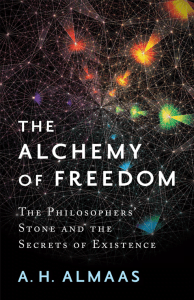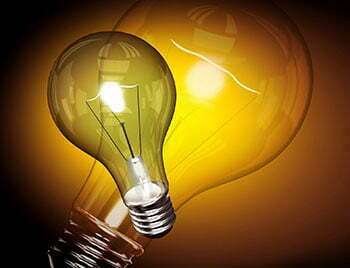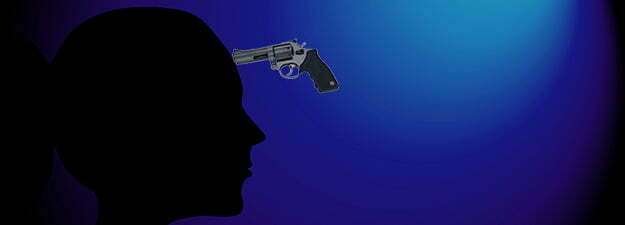Soul has no gender, but we humans have many challenges in regards to inclusivity when it comes to gender and sexuality
There’s been quite a bit of discussion within the Ridhwan School recently on sexuality and gender (A Vision of Diversity and Inclusivity). One Diamond Approach teacher has facilitated several workshops around the globe for teachers and students of the Diamond approach.
The purpose of the Sexuality and Gender Committee is to facilitate a richer and more complete understanding of sexuality and gender within the student/teacher body of the School, and within humanity as a whole; to open an exploration into how sexuality and gender arise or are blocked in our individual experience; and to nurture a deeper inquiry into the diverse expressions of our sexuality and gender.
I haven’t attended the workshop, but I came across several articles on gender and sexuality that opened my mind and heart. I want to share a few highlights you might find of interest.
Like many, I grew up with two simple gender designation – male and female. Somewhere along the line a couple more were added – homosexual and lesbian. Then came gay, bisexual, transgender and more. The United Nations lists over 40 gender designations. In 2012, the United Nations printed Born Free and Equal: Sexual Orientation and Gender Identity in International Human Rights Law.
 The January 2017 issue of National Geographic focused on the “Gender Revolution” and Katie Couric takes her journalism skills on the road in Gender Revolution: A Journey with Katie Couric, a two-hour National Geographic Channel special (Monday, February 6, 9 ET/PT), meeting sex and gender experts, trans men and women and college students whose identities go beyond binary gender roles.
The January 2017 issue of National Geographic focused on the “Gender Revolution” and Katie Couric takes her journalism skills on the road in Gender Revolution: A Journey with Katie Couric, a two-hour National Geographic Channel special (Monday, February 6, 9 ET/PT), meeting sex and gender experts, trans men and women and college students whose identities go beyond binary gender roles.
People are almost always designated male or female at birth based on genitalia. Gender includes components such as gender identity and expression, but not sexual orientation. Some cultures recognize genders that are neither man nor woman. – National Geographic
Perhaps one of the clearest examples of how biology underlies many elements of masculinity and thus is a factor in the cultural construction of manhood is a rare genetic condition called androgen insensitivity syndrome. Babies are born with a Y chromosome and therefore biologically male, but their bodies can’t process testosterone and so default to the female phenotype. They have features and traits of a woman, smooth hairless skin, minimal body odor, a rudimentary vagina. They feel themselves to be women. But with internal testes instead of ovaries and a uterus, they can’t give birth. – National Geographic
One of the most eye-opening articles was this one by Why Sex Is Mostly Binary but Gender Is a Spectrum BY Siddhartha Mukherjee in Nautilus Magazine – that genes have anything to do with the determination of sex, gender, and gender identity is a relatively new idea in our history.
Anyone who doubts that genes can specify identity might well have arrived from another planet and failed to notice that the humans come in two fundamental variants: male and female. Cultural critics, queer theorists, fashion photographers, and Lady Gaga have reminded us— accurately—that these categories are not as fundamental as they might seem, and that unsettling ambiguities frequently lurk in their borderlands. But it is hard to dispute three essential facts: that males and females are anatomically and physiologically different; that these anatomical and physiological differences are specified by genes; and that these differences, interposed against cultural and social constructions of the self, have a potent influence on specifying our identities as individuals.
 These case reports finally put to rest the assumption, still unshakably prevalent in some circles, that gender identity can be created or programmed entirely, or even substantially, by training, suggestion, behavioral enforcement, social performance, or cultural interventions. It is now clear that genes are vastly more influential than virtually any other force in shaping sex identity and gender identity—although in limited circumstances a few attributes of gender can be learned through cultural, social, and hormonal reprogramming. Since even hormones are ultimately “genetic”—i.e., the direct or indirect products of genes—then the capacity to reprogram gender using purely behavioral therapy and cultural reinforcement begins to tip into the realm of impossibility. Indeed, the growing consensus in medicine is that, aside from exceedingly rare exceptions, children should be assigned to their chromosomal (i.e., genetic) sex regardless of anatomical variations and differences—with the option of switching, if desired, later in life. As of this writing, none of these children have opted to switch from their gene-assigned sexes.
These case reports finally put to rest the assumption, still unshakably prevalent in some circles, that gender identity can be created or programmed entirely, or even substantially, by training, suggestion, behavioral enforcement, social performance, or cultural interventions. It is now clear that genes are vastly more influential than virtually any other force in shaping sex identity and gender identity—although in limited circumstances a few attributes of gender can be learned through cultural, social, and hormonal reprogramming. Since even hormones are ultimately “genetic”—i.e., the direct or indirect products of genes—then the capacity to reprogram gender using purely behavioral therapy and cultural reinforcement begins to tip into the realm of impossibility. Indeed, the growing consensus in medicine is that, aside from exceedingly rare exceptions, children should be assigned to their chromosomal (i.e., genetic) sex regardless of anatomical variations and differences—with the option of switching, if desired, later in life. As of this writing, none of these children have opted to switch from their gene-assigned sexes.
It is now clear that genes are vastly more influential than virtually
any other force in shaping sex identity and gender identity.
In Beyond Sexual Orientation by Ankur Paliwal discusses sexual fluidity with Lisa Diamond – sexual fluidity is a challenge to both traditional and alternative sexual narratives.
Sexual fluidity is different from homosexuality or heterosexuality, which are single orientations. “Fluidity allows people to go outside their orientation,” Lisa Diamond says. Some individuals have steady patterns of attraction their entire lives that are consistent with their orientation. But for the sexually fluid, their orientation is not the last word on their attraction.
As humans, we use categories and naming and concepts to live and survive, but naming has a downside. When we name and categorize we create division and the opportunity for divisiveness, bias, prejudice and all sorts of beliefs and positions. Here is a quick lesson in how powerful nouns and names are in formulating beliefs: How Our Words Affect Our Thoughts on Race and Gender.
 I don’t know how I happened upon Resurrection: Ertugrul on Netflix, call it luck or grace, but it really captured my attention – 170 episodes viewed in a couple of months – maybe even 6 weeks. I’m sure it’s not for everyone and fewer still will watch 170 subtitled episodes!
I don’t know how I happened upon Resurrection: Ertugrul on Netflix, call it luck or grace, but it really captured my attention – 170 episodes viewed in a couple of months – maybe even 6 weeks. I’m sure it’s not for everyone and fewer still will watch 170 subtitled episodes!  I found the cast to be superb. After 170 episodes of Resurrection: Ertugrul, I felt like I knew each one of these people intimately. Even though the story puts the “shine on the apple,” I appreciated the sense of the culture and history it points to.
I found the cast to be superb. After 170 episodes of Resurrection: Ertugrul, I felt like I knew each one of these people intimately. Even though the story puts the “shine on the apple,” I appreciated the sense of the culture and history it points to.






